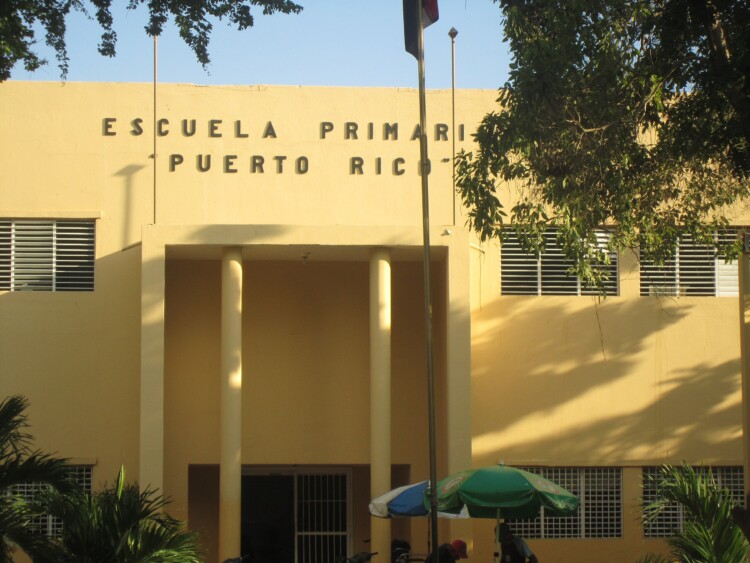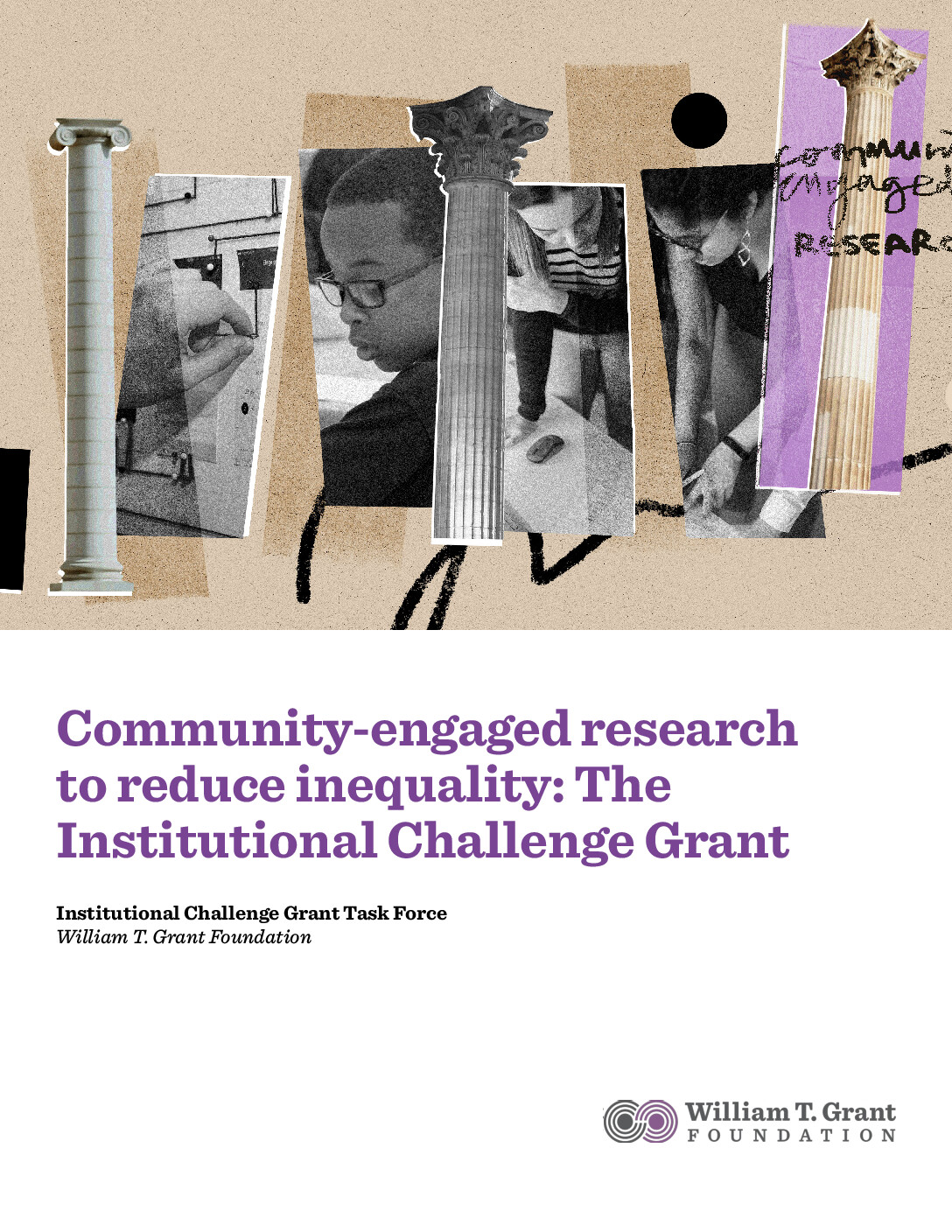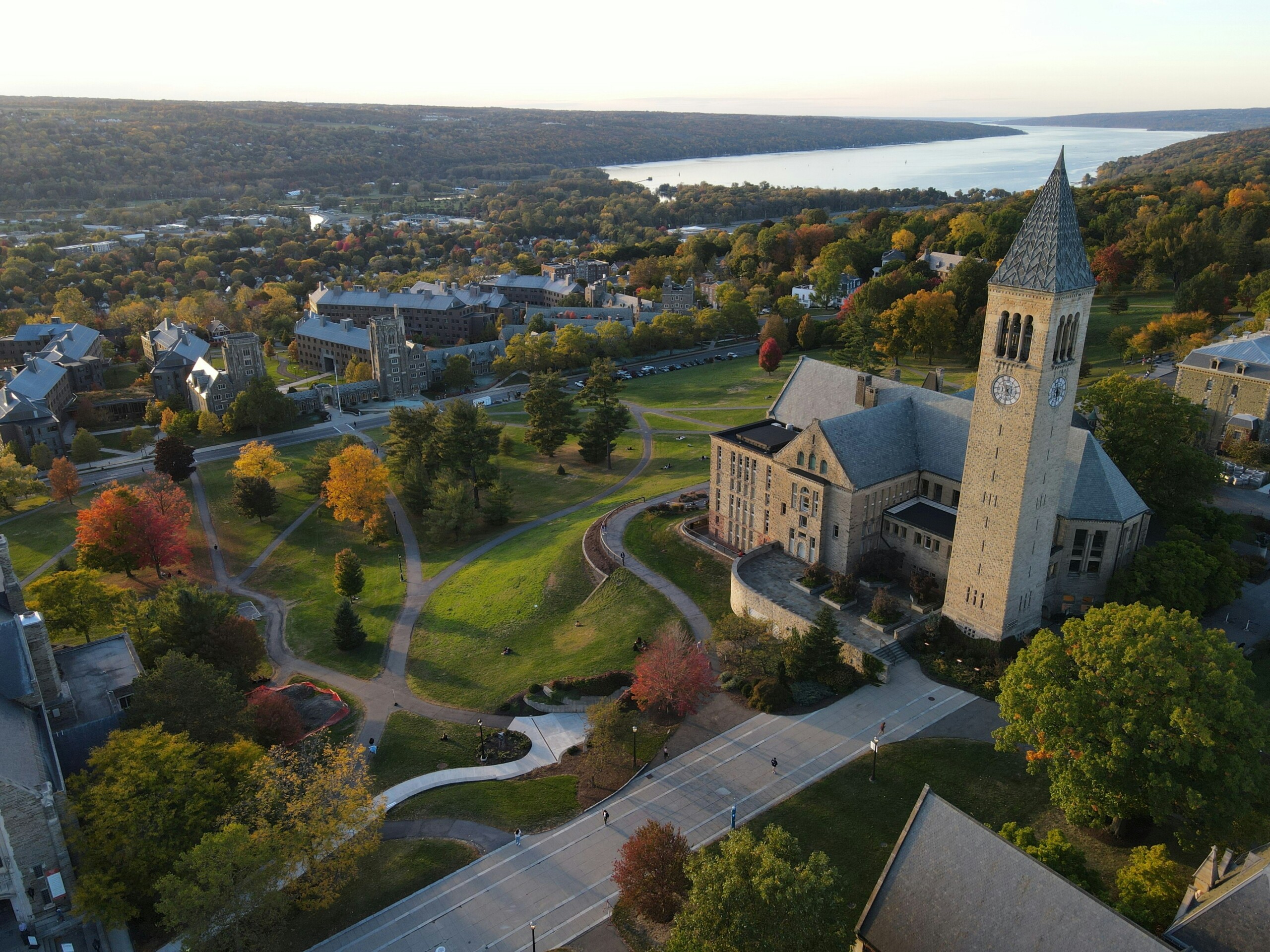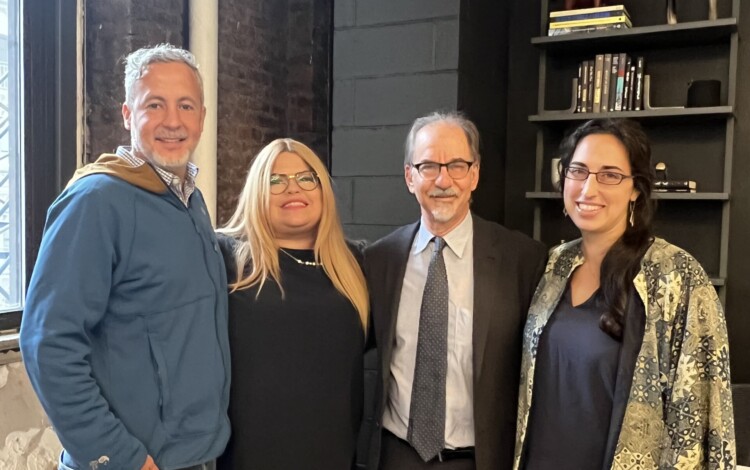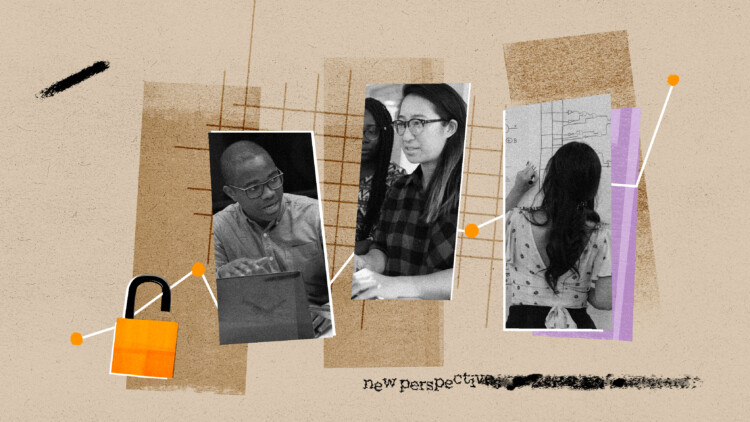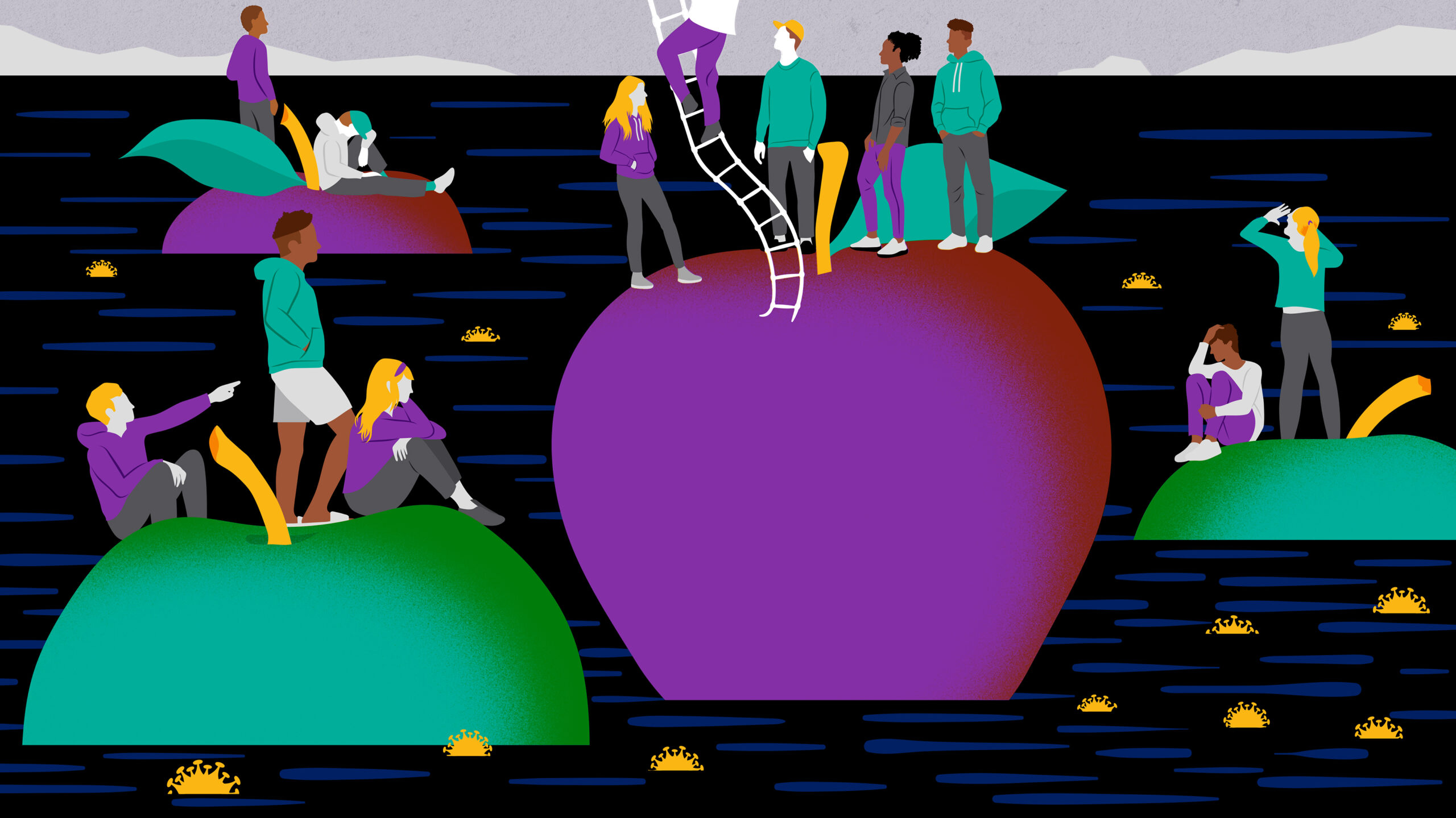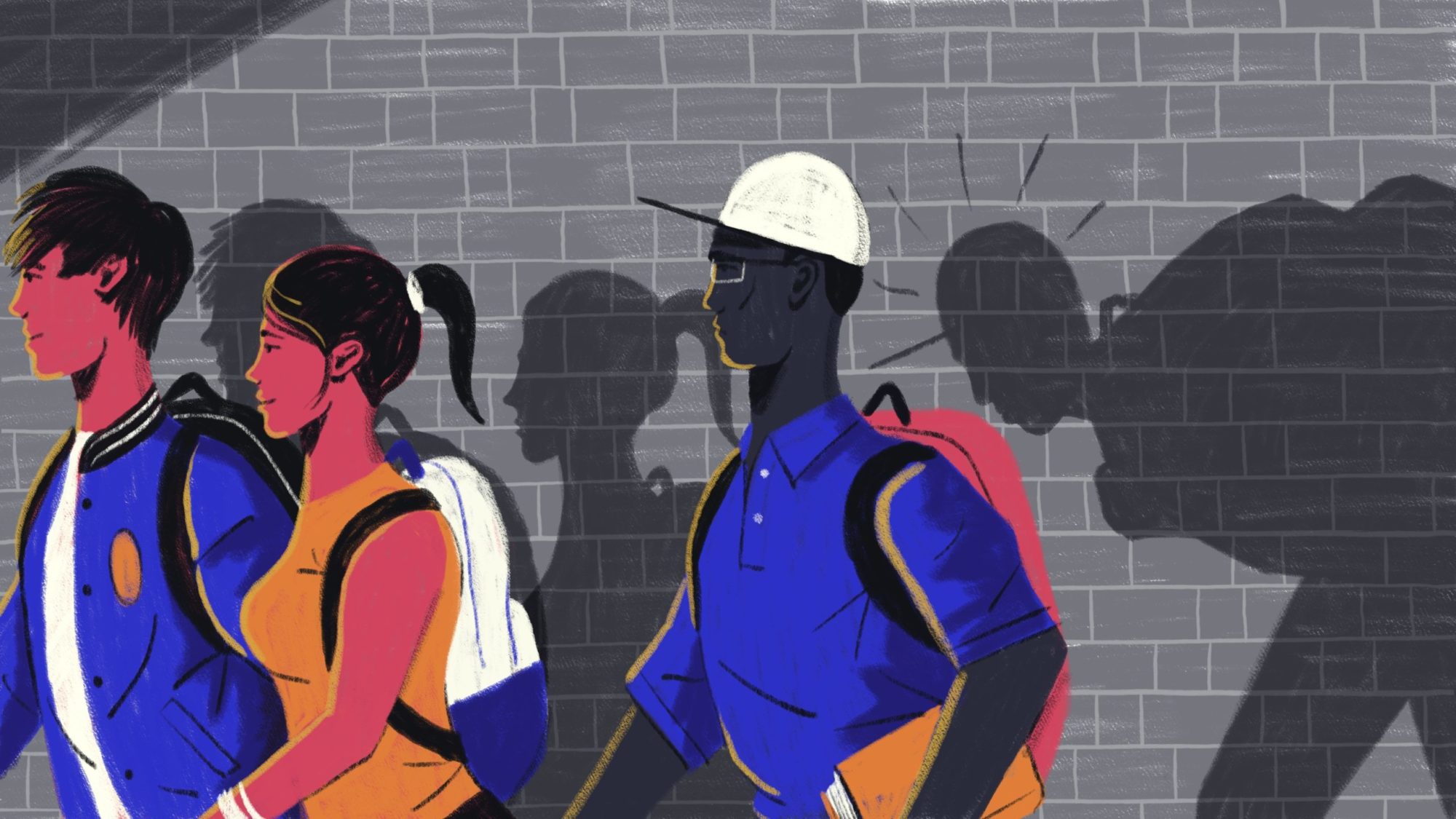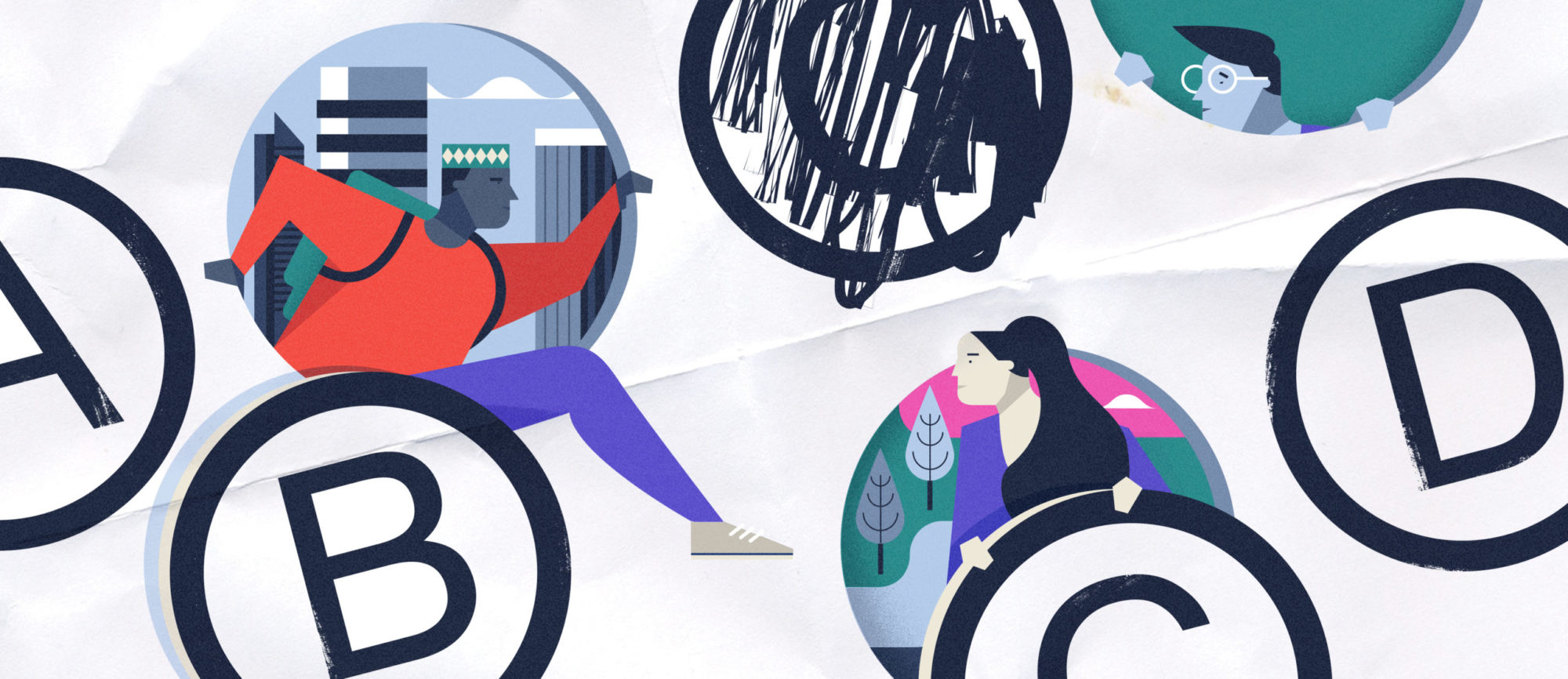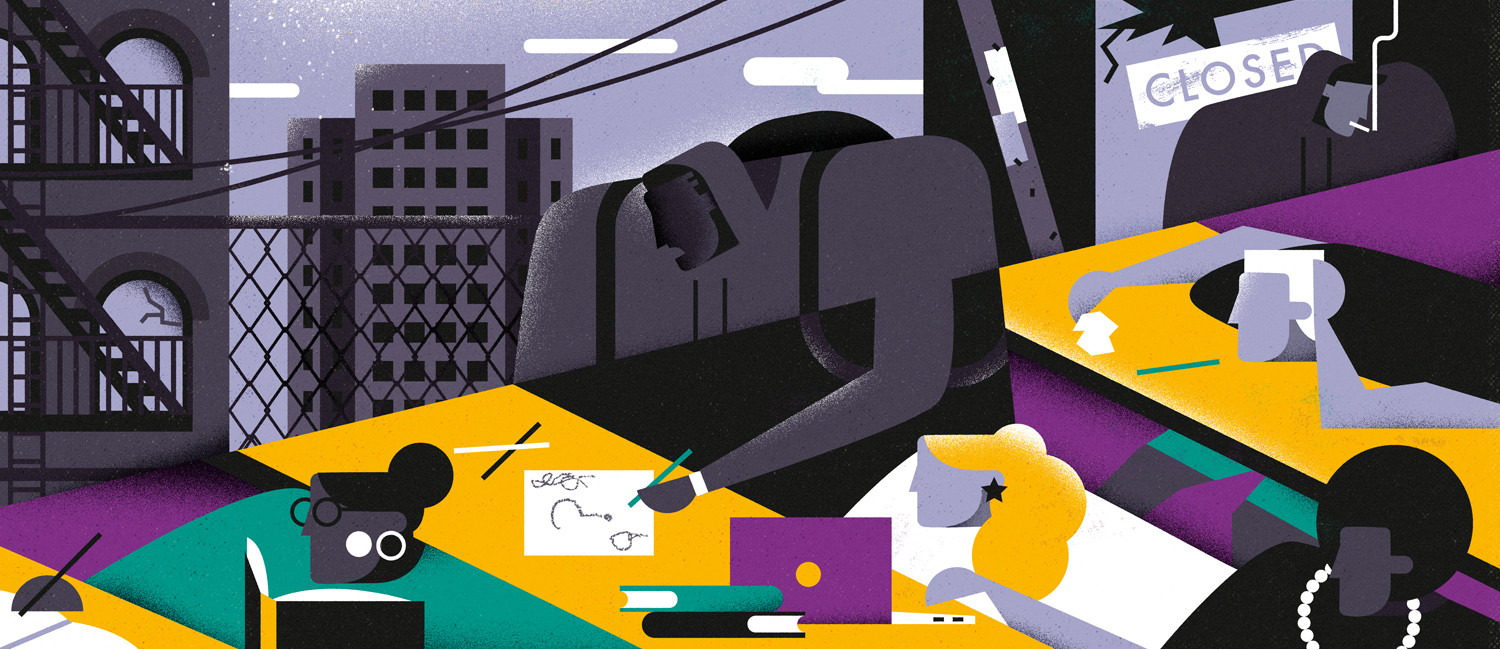Institutional Challenge Grant Task Force and Adam Gamoran
February 21, 2024
Atthe William T. Grant Foundation, our mission is to support research to improve the lives of young people.1 But given the long pathway from research to action, how can we ensure that we will achieve this goal? This essay shares findings from a recent effort at the Foundation to understand how the Institutional Challenge Grant Program, which was designed to shorten the distance between the research production and research use, has fared in pursuit of this aim.
What is the Institutional Challenge Grant?
In 2017 the Foundation launched the Institutional Challenge Grant program(ICG). The ICG provides an initial $650,000 over three years, including a planning period, and all grantees are invited to apply for a continuation award of $350,000 over a subsequent two years. With a possible total of $1 million in grant support over five years, the program supports partnership-based research on promising approaches for reducing inequality in youth outcomes.
By addressing two significant barriers to sustained research use, the ICG seeks to increase the odds that research findings lead to action. First, because community agencies often have scarce resources for internal research functions, the ICG supports essential capacity-building toward this end. Second, because universities are not traditionally designed to support partnership-based research, the ICG requires universities to develop incentives for researchers to pursue research agendas that are co-defined through collaboration with public agencies and nonprofit service providers that benefit communities beyond the university gates. In all, the ICG challenges universities to pursue four goals:
- Grow an existing institutional partnership with a public agency or nonprofit organization
- Pursue a joint research agenda to reduce inequality in youth outcomes
- Create institutional change to value research-practice partnerships within research institutions
- Enhance the capacity of both partners to collaborate on producing and using research evidence.
Despite the promise of the program’s approach and the deep evidence supporting its rationale, skepticism remained about whether the ICG’s four goals were achievable.
Would the partnerships find agreement about meaningful research? Would the grant enable the community partners to build sufficient capacity to make use of the findings? Would universities seriously contemplate modifying their own policies and practices in ways that would encourage faculty members to partner with community agencies and co-produce research? To answer these questions, we convened a Task Force2 composed of staff, funding partners, and external consultants to review evidence drawn from administrative data, documents provided by grantees, and interviews with various constituents. Here, we discuss key findings from our review, including whether the partnerships have proven robust, and whether we see progress toward the program’s goals.
How has the ICG grown and what is the program supporting?
In the period under review, partnerships with other funders, including the Spencer, Doris Duke, and Bezos Family foundations, as well as the American Institutes for Research, enabled us to make many more awards than we initially anticipated. The Foundation awarded 16 Institutional Challenge Grants in the amount of $10.4 million—nearly three times what we could have made had we remained the sole funder. In addition, we awarded $1.3 million in grants to four partnerships to continue their work beyond the initial three-year grant period.
Given the Foundation’s focus on improving outcomes for young people ages 5-25, it is not surprising that eight grants (half of the funded awards) center on K-12 education, while the remaining grants focus on a mix of child welfare, neighborhoods and housing, juvenile justice, mental health, postsecondary education, or workforce development domains.
The Foundation is primarily interested in supporting research to reduce inequalities by race, ethnicity, economic standing, and immigrant origin, and the ICG grants we have funded are often concerned with multiple and intersecting dimensions of inequality. Fourteen projects focus on inequality on the dimension of race and ethnicity, and nine focus on the dimension of economic standing (projects may have more than one inequality focus). The majority of projects center on reducing inequalities in academic outcomes, followed by social, emotional, and behavioral outcomes, and finally economic outcomes.
In terms of grantees, both university and community leaders exhibit racial, ethnic, and gender diversity. However, less diversity was evident in the types of universities that apply and succeed in the competition: While grantees include public as well as private institutions, 83 percent of the applicants and 100 percent of the winners are research-intensive universities, meaning their research expenditures total at least $100 million annually. This finding presents a challenge to the aim of supporting an inclusive grants program that is accessible to applicants from different types of higher education settings.
How are grantees building collaborative communities?
An essential aspect of the ICG program concerns building community in the service of social impact. As a result of the ICG experience, three types of relationships emerge as salient features of community building: relations between university and community partners, relations within universities, and relations among grantees across partnerships.
We learned through interviews that grantee partnerships have thrived as a result of the ICG. For instance, connections between the partners shifted from “transactional” to “relational.” That is, research-practice partnerships typically start out on a basis of give and take—for example, the community partner may provide data, and the university partner may answer research questions. Through the ICG, however, participants deepened their collaboration, engaged in more intensive communication, and developed a stronger sense of trust.
Interviews indicated that the ICG provided a catalyst to formalize and enhance existing connections. And as we know from studies on the use of research evidence, building trust is key in the uptake of evidence. One university leader reported that the ICG facilitated:
“a better understanding of our partner’s constraints, environment, stakeholders ….” In so doing, this leader commented, the partners are ‘developing a richer understanding of each other’s work.’ In parallel, a community leader stated that “the collaboration and communication are incredibly strong; we can be frank with each other and honest about the reality of different situations …. I trust them completely.”
The ICG also enhanced community-engaged research by bringing together like-minded scholars. In fact, grantees often used ICG funding to support centers for engaged scholarship that provided a home for researchers across campus. In the words of one grantee:
“Chairs and Deans supported course-release time for folks to do community-based research. We sent out an announcement to junior faculty who have the most barriers to do this research and last year we had 17 applications…the university wouldn’t have coughed up that money if we hadn’t committed to doing this work as part of the grant.”
Additional evidence of campus community-building came from artifacts submitted by grantees. For example, the team from UC Santa Cruz reported on a conference featuring numerous types of community-engaged scholarship, noting that:
“More than 400 university scholars, students, community organizers, foundation representatives, artists, and activists came together in late October [2022] for a one-of-a-kind event to build collaborative partnerships for community-engaged research and meaningful social change at the UC Santa Cruz conference, ‘All-In: Creating Knowledge for Justice.'”
Finally, the Foundation’s long tradition of creating community among our grantees extends to the ICG program. Those who have attended an annual convening of ICG grantees noted that the experience helped elevate their work within their universities and community agencies. They also noted the value of these convenings to build the network of researchers and practitioners who are doing community-engaged research. As one community partner stated:
“I just feel like there is this really incredible awareness of wanting to make things change and shift … in the face of potential pushback, it gives me hope for the future.”
What research are grantees producing?
ICG teams have produced a large volume of research, which has yielded numerous products, including government documents, memoranda, research reports and briefs, presentations, and the like. Peer-reviewed articles are less represented in the volume of research products, and we discerned three reasons for this pattern. First, most partnerships are still early in their work. Indeed, several partnerships have working papers that are likely to become journal articles in the near future. Second, the pandemic disrupted many projects and slowed the pace of their progress. Fortunately, the pandemic did not disrupt interactions between the university and community partners. Consistent with the goals of the ICG program, research findings are shared as they emerge. Interestingly, many of the research products are not produced by the university partners for the community partners, they are co-produced. Of 162 examples of research submitted by 10 partnerships, 47 were produced by the community partners, 37 by the university partners, and 78 by both partners working together.
A third reason that reports and briefings have emerged faster than published articles is that partnership work takes time, but the community partners do not have the luxury of waiting for publication to act on the findings. For example, an evaluation of a principal training program for the Puerto Rico Department of Education will ultimately be published in a journal by researchers from the University of Toronto, their university partner. But the findings were already presented to the Department of Education to inform decision-making. As one university grantee explained in an interview, “… it doesn’t need to be a zero-sum game between engaging in research-practice partnerships and disseminating information within the [disciplinary] field.” These findings demonstrate that research evidence can be useful in the short term even as the usual lag to academic publication remains.
How are grantees fostering institutional change within universities?
Across ten responding university grantees, we identified 65 artifacts representing institutional change. These artifacts described developments such as new administrative positions to support engaged scholarship, new funding, training for faculty interested in engaged scholarship, and more. Other artifacts reflected new resources for engaged scholarship. One example is the “Engaged Research Competition” held at Georgia State University in its first year of ICG funding. The competition was organized by the Andrew Young School of Policy Studies and is open to tenure-track assistant professors all across the university.
Each of the four continuation grants provided further examples of institutional change to support engaged scholarship. For example:
- At Cornell University, Rachel Dunifon, Dean of the College of Human Ecology and Principal Investigator on the grant, elevated the College’s outreach and extension work and integrated it into the College’s strategic planning and leadership structure. Dunifon even raised $3 million from philanthropy to create three endowed Engaged Faculty Fellowships, which will provide two years of funding to support a graduate student, summer money, and research funds for each Fellow.
- Principal Investigator Emily Ozer, a psychologist in the School of Public Health at UC Berkeley, has written about how her institution shifted its framework for promotion and tenure. Ozer has also co-initiated a cross-campus UC Community Engagement Network “to strengthen the conditions for community-engaged research and other forms of community engagement.”
- At Northeastern University, Principal Investigator Alicia Modestino has parlayed ICG funding into an “impact engine” funded by the university to expand engaged scholarship across the university including at campuses in Boston and Oakland, California.
Of the four goals of the ICG, institutional change generated the most skepticism at the outset. Even today, when Foundation staff visit campuses around the nation to showcase the ICG and our other grant opportunities, we are often asked, “Can universities really change?” Having taken stock of the program thus far, it seems the answer is yes. In addition to the stock-taking report, two other reports yield evidence that momentum is gathering for institutional change. In a recent article in the journal Educational Policy, Gamoran (2023) described the barriers to institutional change, and how some universities—notably those in our ICG program—are overcoming the barriers. And on behalf of the Transforming Evidence Funders Network, Ozer and colleagues (2023) conducted a national scan of universities offering incentives for faculty to pursue engaged scholarship. These papers, along with the evidence assembled by the Task Force, suggest that in implementing the ICG, we are capitalizing on momentum that is broader than that of our own program.
How are grantees building community organizations’ capacity to use evidence?
The Task Force observed consistent and widespread evidence that the community agencies participating in the program are building their capacity to use evidence in their work with young people. The interviews revealed three common approaches to expanding capacity: building research literacy, improving data infrastructure, and addressing personnel needs.
A common approach to capacity-building was creating new roles within the community partners to produce and use evidence. For example, United Way of Massachusetts Bay and Merrimack Valley, a partner with Boston College, created the position of senior director for research and learning, consistent with their larger shift in strategic direction to infuse evidence into their work. Responsibilities included:
Building shared knowledge about the fields in which United Way works, both internally among staff and externally among stakeholders … [the employee] will be an experienced champion of data-informed continuous improvement and of centering participants in research, evaluation, and measurement activities.
ICG participants also helped improve agency data systems. As one university fellow commented in an interview:
“[Our partner] was always interested in collecting data, but they weren’t looking at this data; they would collect surveys and they’d sit in a cabinet. One concrete thing we have done in this grant is pull reports so they have information available … in real time.”
Taken together, the findings indicate that the community agencies made strides towards greater capacity to use evidence in the context of their partnerships.
What does the future hold?
Responding to the findings of the Task Force, the Trustees of the Foundation reaffirmed their commitment to funding the Institutional Challenge Grant program. Our funding partners remain on board, and we expect to continue awarding multiple grants each year. At the same time, the Task Force identified several areas of opportunity to strengthen the program.
Strengthening the network of scholars, leaders, and funders around community-engaged research
Here, the Task Force identified several possibilities, including continued investment in our grantee community through the annual convening, bringing other campus leaders to the grantee convenings, and bringing additional partners to fund the ICG, particularly through the Transforming Evidence Funders Network. Another idea is to work with disciplinary organizations to elevate the value of engaged scholarship within the discipline. This is important because university faculty are usually oriented to disciplinary norms when judging colleagues for career advancement and when seeking it for themselves (Gamoran, 2023). Disciplinary organizations may represent venues to explore what it means to value partnership-oriented, engaged scholarship and how to “count” contributions to engaged scholarship in career advancement decisions. For instance, the Foundation recently provided a grant to the American Sociological Association to pilot a process for engaging sociology departments to recognize and reward community-engaged scholarship in promotion and tenure criteria. The pilot involves a private university, a research-intensive state university, and an HBCU.
Exploring new avenues to expand the pipeline of ICG applicants and grantees
To pursue this opportunity, the Task Force recommended more targeted outreach in areas and with institutions not well represented in our portfolio. Here, we identified the possibility of specialized outreach in areas where we are particularly eager to see new applicants, such as child welfare and immigration. At the same time, the Task Force recognized that enhancing the pipeline may not merely be a matter of broader communication, but may require additional engagement efforts to help potential grantees succeed. An important aspect of engagement would be to hear from potential applicants their own sense of what resources and/or guidance they may need to compete effectively for this award. Small group meetings of researchers in new domains might also help build momentum and galvanize new applicants.
The Task Force also discussed ways to be more inclusive of institutions that are underrepresented among the ICGs. One successful model we are already seeing is ICG partnerships between research-intensive universities and minority-serving institutions that have less developed research infrastructures, which helps both institutions pursue the mission of the ICG.
Leveraging examples of institutional change from current grantees to guide others
With six years of experience behind us, we have numerous examples of how grantees are leveraging institutional change to support partnership-oriented, engaged scholarship. Indeed, several grantees have provided journal articles and blog posts that describe their experiences (see “references & further reading”). We can use these examples—which are not limited to changes in tenure and promotion practices—to help others envision ways to better support social impact research.
In addition to our grantees, the Transforming Evidence Funders Network has taken a keen interest in institutional change. For example, the group funded Ozer et al.’s (2023) scan of what some universities are doing to better support social impact research, which indicates that promising efforts toward this end are more common than one might have expected.
Exploring whether and how ICG partnerships are helping to reduce inequality in youth outcomes in their communities
The Task Force endorsed the notion that we need to think more deeply about how to recognize the impact of the ICG beyond the use of research. To pursue this opportunity, the Task Force called for examination of implications of the grant for youth inequality, which is at the heart of the research agenda for each grant. While it is too early to witness inequality reduction, it is not too early to think about how such change may be manifested and what early signs can be monitored. The grantees themselves are already helping us think about how to address this goal.
Conclusion: Learning While Doing
As a learning organization, the William T. Grant Foundation strives to reflect on our programs as they unfold. Our goal as a grantmaker is not merely to fund high-quality research studies, but to shape the environment for research and its relationship to policy and practice. The Institutional Challenge Grant is central to this strategy because it brings together our focus on reducing inequality in youth outcomes with insights drawn from research we have supported on improving the use of research evidence. The recommendations of the Task Force will help us come closer to achieving our aims for the ICG program.
###
References & Further Reading
Bobonis, G., & Medelius, N. R. (2019). Policy-makers and researchers collaborate to improve education quality in Puerto Rico. Abdul Latif Jameel Poverty Action Lab (J-PAL). https://www.povertyactionlab.org/blog/7-9-19/policymakers-andresearchers-collaborate-improve-education-quality-puerto-rico
Bobonis, G., Goldman, E., Sotomayor, O., & Varela-Vélez, D. (2023). Learning by doing together: Improving education policy in Puerto Rico through a research-practice partnership. William T. Grant Foundation. https://wtgrantfoundation.org/learning-by-doing-together-improving-education-policy-in-puerto-rico-through-a-research-practice-partnership
Dunifon, R. (2021). Engaged research and lasting change: Lessons from an Institutional Challenge Grantee. William T. Grant Foundation. https://wtgrantfoundation.org/engaged-research-and-lasting-change-lessons-from-an-institutional-challenge-grantee
DuMont, K. (2019). Reframing evidence-based policy to align with the evidence. William T. Grant Foundation. https://wtgrantfoundation.org/digest/reframing-evidence-based-policy-to-align-with-the-evidence
Gamoran, A. (2023). Advancing institutional change to encourage faculty participation in research-practice partnerships. Education Policy, 37, 31–55. https://doi.org/10.1177/08959048221131564
London, R., & Glass, R. D. (2022). Toward equitable collaboration: Community partners’ strategic perspectives on community-engaged research. William T. Grant Foundation. https://wtgrantfoundation.org/toward-equitable-collaborationcommunity-partners-strategic-perspectives-on-community-engaged-research
London, R., Glass, R. D., Chang, E., Sabati, S., & Nojan, S. (2022). “We are about life-changing research”: Community partner perspectives on community-engaged research collaborations. Journal of Higher Education Outreach and Engagement, 26, 19–36. https://openjournals.libs.uga.edu/jheoe/article/view/2512
Ozer, E. J. (2021). How we embraced the challenge of institutional change to pave the way for community-engaged research. William T. Grant Foundation. https://wtgrantfoundation.org/how-we-embraced-the-challenge-of-institutional-changeto-pave-the-way-for-community-engaged-research
Ozer, E. J., Langhout, R. D., & Weinstein, R. S. (2021). Promoting institutional change to support public psychology: Innovations and challenges at the University of California. American Psychologist, 76, 1293–1306. https://doi.org/10.1037/amp0000877″
Ozer, E. J., Renick, J., Jentleson, B., & Maharramli, B. (2023). Scan of promising efforts to broaden faculty reward systems to support societally impactful research. Pew Charitable Trusts. https://www.pewtrusts.org/en/research-and-analysis/white-papers/2023/10/universities-take-promising-steps-to-reward-research-that-benefits-society
Schultz, K., & Yadama, G. (2022). Advancing institutional change: How two deans are fostering change through the Institutional Challenge Grant. William T. Grant Foundation. https://wtgrantfoundation.org/advancing-engaged-research-how-twodeans-are-fostering-change-through-the-institutional-challenge-grant
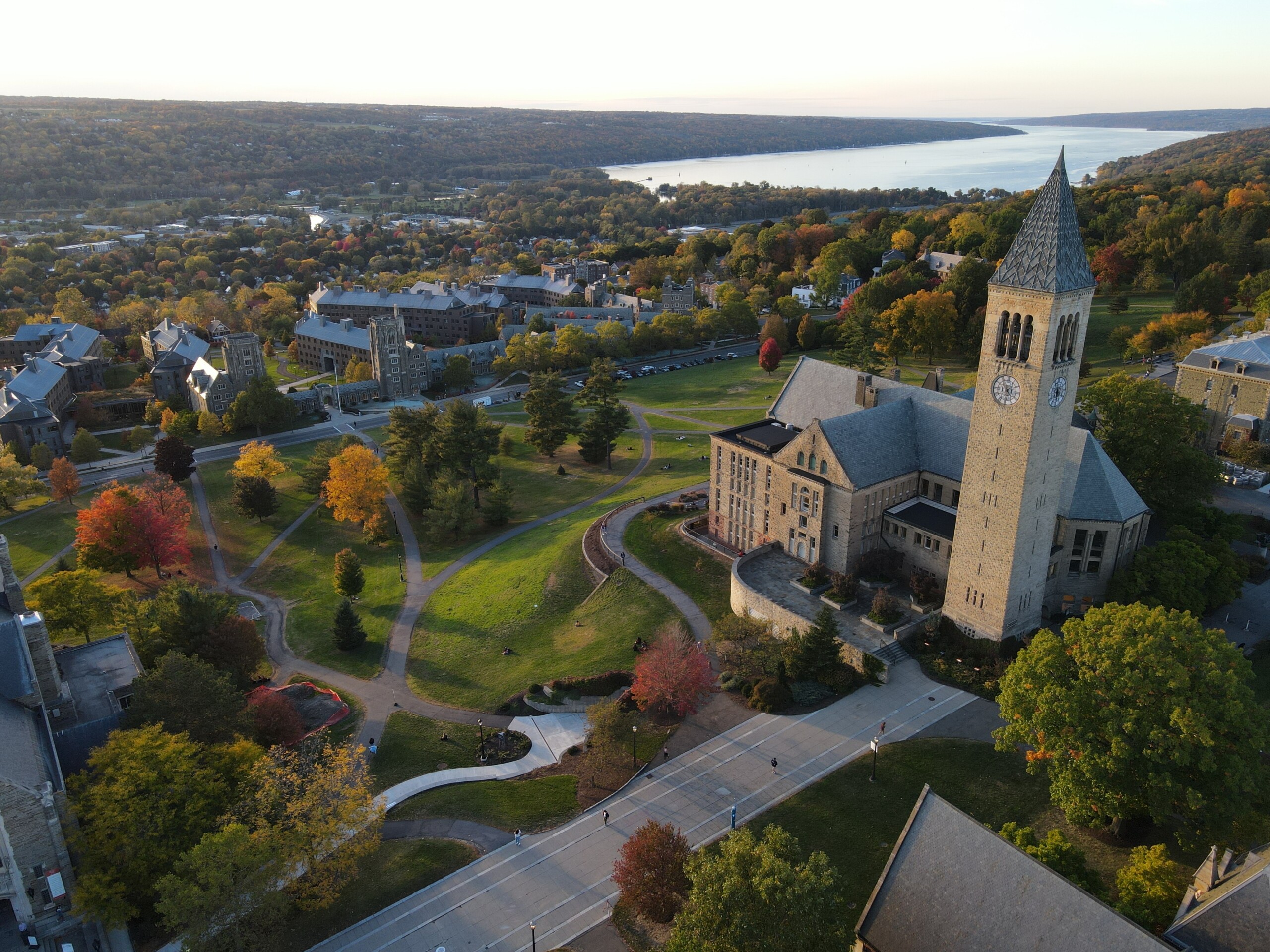
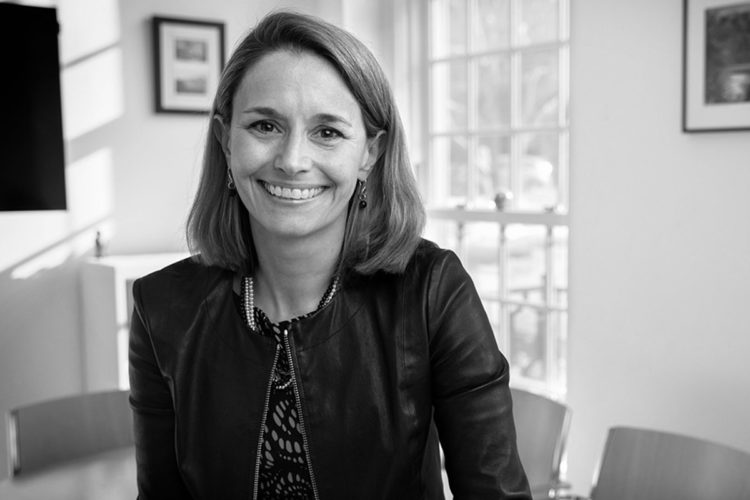
- For complete citations and references, download the PDF of this article.
- The Institutional Challenge Grant Task Force consisted of Adam Gamoran (chair), Jenny Irons, James Lui, Lenore Neier, Nancy Rivera-Torres, Leah Bricker (Spencer Foundation), and Rumeli Banik (formerly Doris Duke Foundation). The Task Force was supported by staff from the research and consulting firm DVP-Praxis: Janelle Clay, Julia Karpicz, and Derek Price. Their report to the Task Force contributed significantly to the findings reported in this essay.

